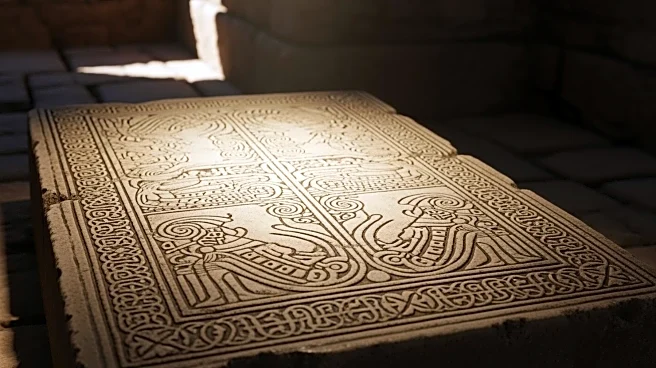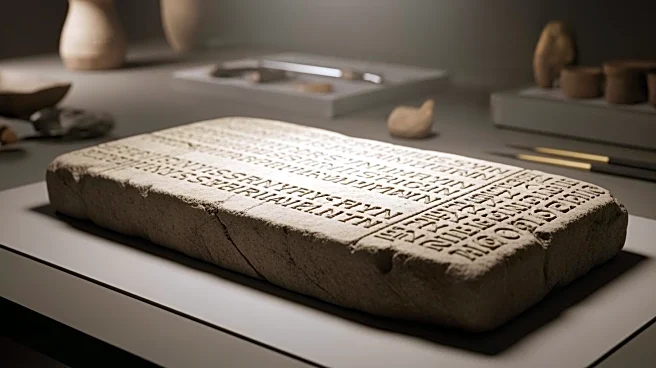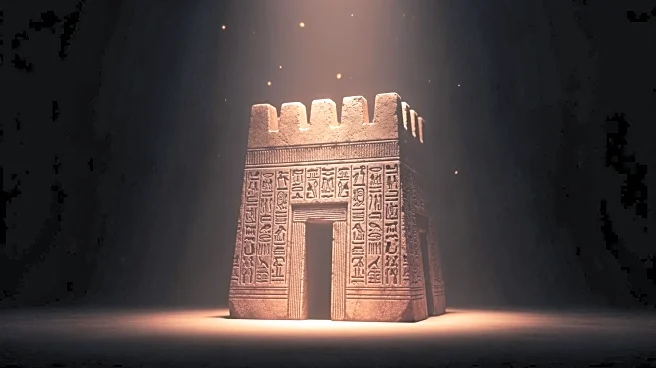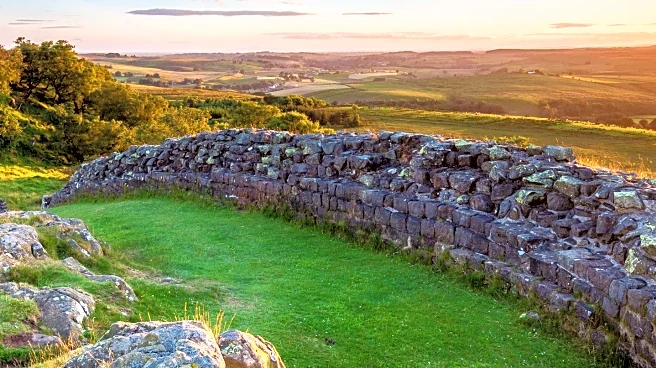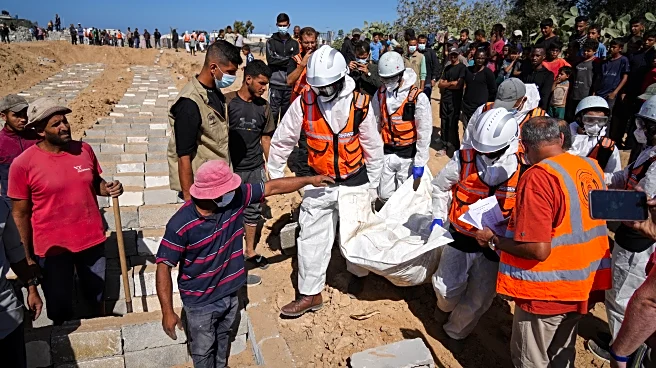What's Happening?
Archaeologists in Jerusalem have discovered a 2,700-year-old Assyrian inscription that provides insight into historical events described in the Bible. The inscription, found in a drainage canal at Temple
Mount, is believed to be a complaint from the Assyrian Empire regarding a delayed tax payment by the Kingdom of Judah. This artifact, inscribed with Akkadian cuneiform, dates back to a period of turmoil between Judah and Assyria, aligning with biblical accounts of King Hezekiah's interactions with Assyrian King Sennacherib. The discovery highlights the complex political relations between ancient kingdoms and offers tangible evidence of historical events that parallel biblical narratives.
Why It's Important?
The discovery of the Assyrian inscription in Jerusalem is significant as it provides concrete evidence of the historical context behind biblical stories. This artifact bridges the gap between history and scripture, offering scholars and historians a clearer understanding of the political dynamics between Judah and Assyria during the 8th and 7th centuries BCE. It underscores the importance of archaeological findings in validating and enriching our understanding of ancient texts, contributing to a more comprehensive view of history. This discovery may lead to further exploration and analysis of ancient artifacts, enhancing our knowledge of the historical events that shaped biblical narratives.
What's Next?
The discovery of the Assyrian inscription is likely to prompt further archaeological investigations in Jerusalem and surrounding areas to uncover additional artifacts that could shed light on historical events described in the Bible. Scholars may engage in deeper analysis of the inscription to explore its implications for understanding the political and economic relations between ancient kingdoms. This could lead to new interpretations of biblical texts and inspire collaborative research efforts between historians, archaeologists, and theologians. The findings may also influence educational approaches to teaching biblical history, integrating archaeological evidence into religious studies curricula.
